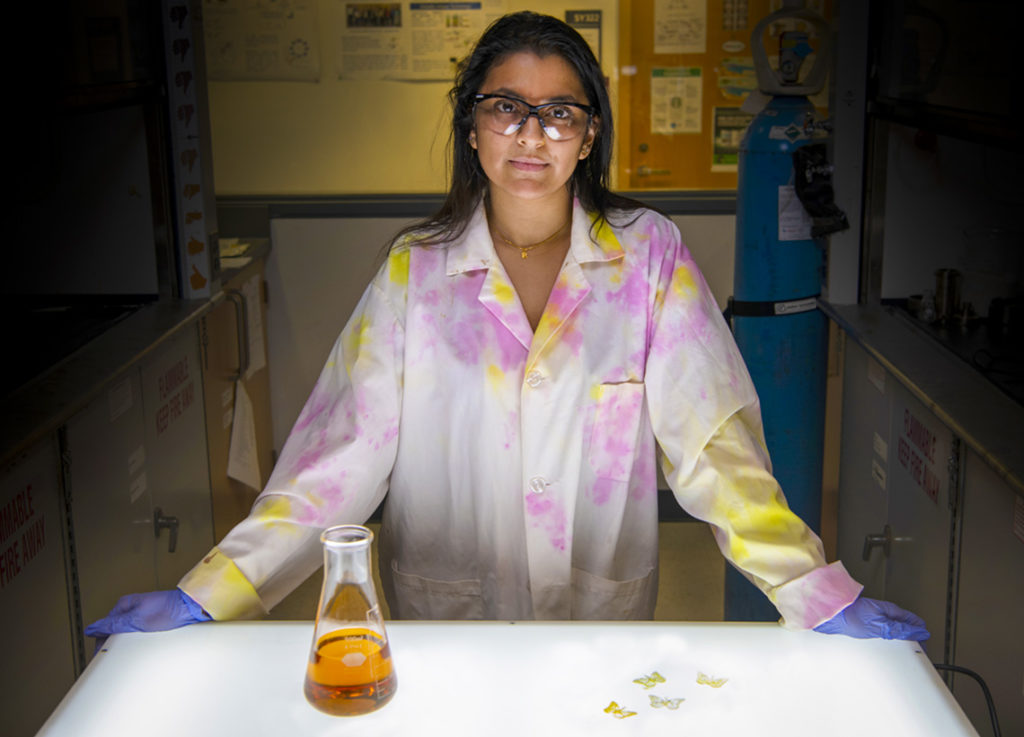Professor Andre Simpson at the University of Toronto is the director of the school’s Environmental NMR Center, dedicated to environmental research. This research uses an analytical tool that is called NMR (Nuclear Magnetic Resonance) spectrometer, which is similar to how an MRI (Magnetic Resonance Imaging) works for medical diagnostics.
Simpson and his team use the NMR spectrometers to look inside tiny living organisms, which helps them understand their biochemical response when there’s a change in the environment.
But a big challenge was heading towards the team when Simpson bought a 3D printer back in 2017 for the lab. His idea was to use the 3D printer to build custom parts that would help keep organisms and samples alive inside the NMR spectrometer. The problem was that the resin needed for SLA 3D printing was expensive (around $300 a liter) and the university’s financial support for the research didn’t cover the cost.
However, Simpson spotted a connection when analyzing the resin. The plastic resin’s molecules were similar to fats that can be found in cooking oil. That’s when Simpson realized the possibility of turning cooking oil into resin for 3D printing. But, yet again, a new challenge was presented for Simpson and his team: finding old cooking oil form a restaurant’s deep fryers to test in the lab.
“We reached out to all of the fast-food restaurants around us. They all said no,” said Simpson.
Despite having no luck when the team contacted several major national fast food chains, the only one that responded was McDonald’s. The restaurant agreed to give Simpson and his team 10 liters of waste oil from a McDonald’s. Back in the lab, the oil was filtered as to take out any food particles. Rajshree Ghosh Biswas, a second year PhD student, joined the team to synthesize small batches of oil, as to convert it into a high-quality resin. To test the resin, butterflies were 3D printed on an Autodesk Ember.
On September, 2019, the team finally printed a high-quality and detailed butterfly as tiny as 100 micrometers.
“We did analysis on the butterfly. It felt rubbery to touch, with a waxy surface that repelled water,” explained Simpson.
The butterfly was “structurally stable” and it didn’t break apart. But what also excited Simpson was that the created butterfly was potentially biodegradable and compostable. He buried a sample butterfly in soil and, two weeks later, 20% of it disappeared.
“If you bury it in soil, microbes will start to break it down because essentially it’s just fat. It’s something that microbes actually like to eat and they do a good job at breaking it down,” said Simpson.
“This is also a great way to reuse and recycle waste cooking oil,” said Ghosh Biswas.
“I was impressed by the research initiative and happy to contribute to something that could possibly be helpful to future generations,” said Terri Toms, the McDonald’s franchisee who gave the oil to Simpson and his team.
Although they are no longer receiving oil from McDonald’s, they still hope their research, published on December 2019 in ACS Sustainable Chemistry & Engineering, gets noticed by the industry.
In their research, the team wrote: “Every year, it costs millions of dollars for fast food restaurants to process waste, including waste cooking oil. Most recycled waste cooking oil is currently used in the production of soap and biodiesel. It may be transformative for recycling programs if high-value commodities can be manufactured directly from it.”
The team estimates that their resin would cost around $227 per tonne which would be an incredible reduction in resin cost from the $150 to $300 per liter that one would typically pay today. The resin used would need more testing, of course, to determine what the parts could be used for and how they would perform outside the realm of microfluidics and in the real world. If this could be used for one limited application such as lost wax casting for jewelry, for example, it could really make SLA much more viable for that particular application. Perhaps this wouldn’t work and furthermore parts would only have a limited life span, but then they could serve as draft parts used in some cases for example. If this product works more widely it could completely revolutionize some SLA applications making them much more viable, inexpensive and safer.
[Source/Images: University of Toronto]Subscribe to Our Email Newsletter
Stay up-to-date on all the latest news from the 3D printing industry and receive information and offers from third party vendors.
Print Services
Upload your 3D Models and get them printed quickly and efficiently.
You May Also Like
Reinventing Reindustrialization: Why NAVWAR Project Manager Spencer Koroly Invented a Made-in-America 3D Printer
It has become virtually impossible to regularly follow additive manufacturing (AM) industry news and not stumble across the term “defense industrial base” (DIB), a concept encompassing all the many diverse...
Inside The Barnes Global Advisors’ Vision for a Stronger AM Ecosystem
As additive manufacturing (AM) continues to revolutionize the industrial landscape, Pittsburgh-based consultancy The Barnes Global Advisors (TBGA) is helping shape what that future looks like. As the largest independent AM...
Ruggedized: How USMC Innovation Officer Matt Pine Navigates 3D Printing in the Military
Disclaimer: Matt Pine’s views are not the views of the Department of Defense nor the U.S. Marine Corps Throughout this decade thus far, the military’s adoption of additive manufacturing (AM)...
U.S. Congress Calls Out 3D Printing in Proposal for Commercial Reserve Manufacturing Network
Last week, the U.S. House of Representatives’ Appropriations Committee moved the FY 2026 defense bill forward to the House floor. Included in the legislation is a $131 million proposal for...




































